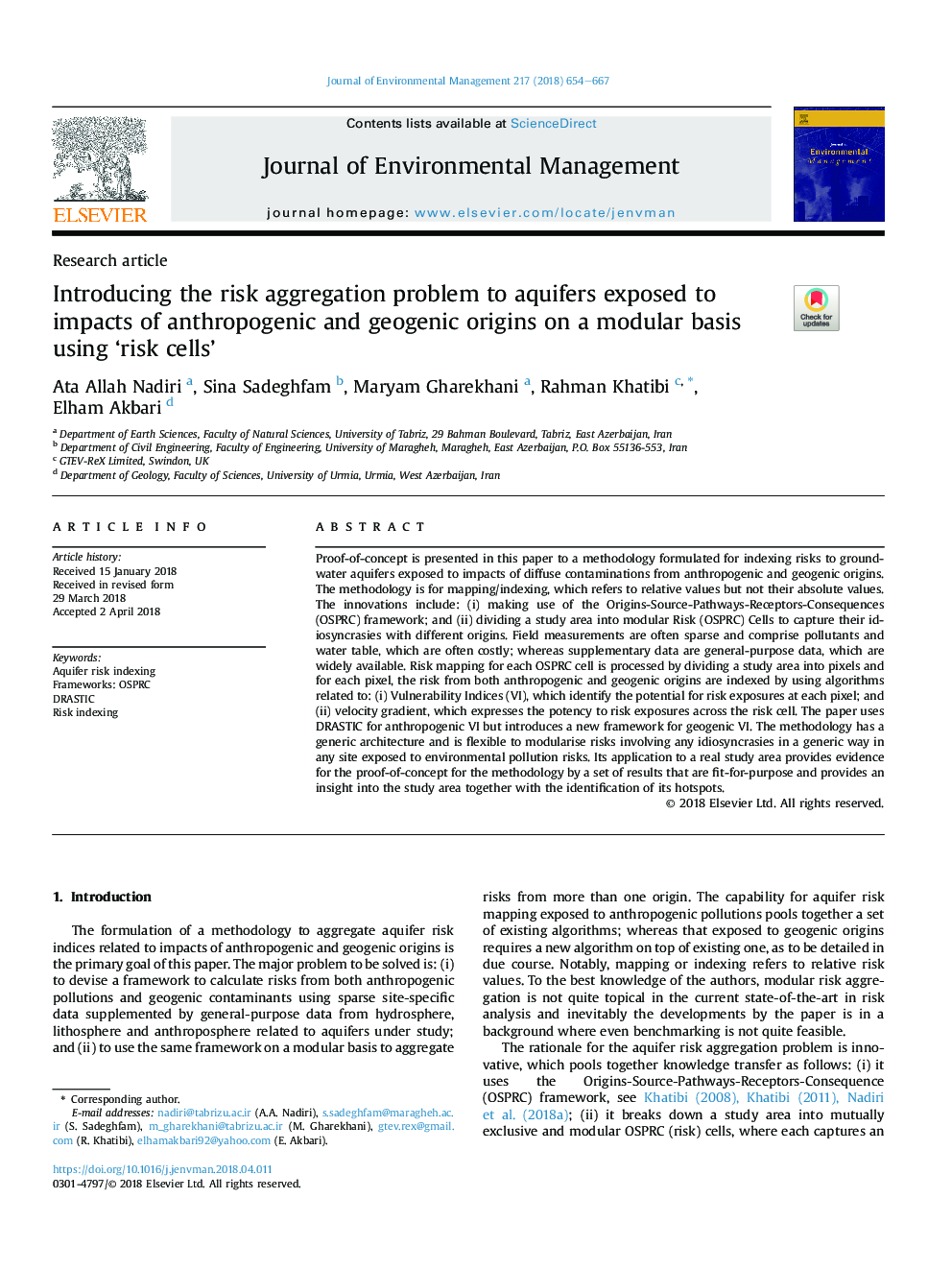| Article ID | Journal | Published Year | Pages | File Type |
|---|---|---|---|---|
| 7477658 | Journal of Environmental Management | 2018 | 14 Pages |
Abstract
Proof-of-concept is presented in this paper to a methodology formulated for indexing risks to groundwater aquifers exposed to impacts of diffuse contaminations from anthropogenic and geogenic origins. The methodology is for mapping/indexing, which refers to relative values but not their absolute values. The innovations include: (i) making use of the Origins-Source-Pathways-Receptors-Consequences (OSPRC) framework; and (ii) dividing a study area into modular Risk (OSPRC) Cells to capture their idiosyncrasies with different origins. Field measurements are often sparse and comprise pollutants and water table, which are often costly; whereas supplementary data are general-purpose data, which are widely available. Risk mapping for each OSPRC cell is processed by dividing a study area into pixels and for each pixel, the risk from both anthropogenic and geogenic origins are indexed by using algorithms related to: (i) Vulnerability Indices (VI), which identify the potential for risk exposures at each pixel; and (ii) velocity gradient, which expresses the potency to risk exposures across the risk cell. The paper uses DRASTIC for anthropogenic VI but introduces a new framework for geogenic VI. The methodology has a generic architecture and is flexible to modularise risks involving any idiosyncrasies in a generic way in any site exposed to environmental pollution risks. Its application to a real study area provides evidence for the proof-of-concept for the methodology by a set of results that are fit-for-purpose and provides an insight into the study area together with the identification of its hotspots.
Keywords
Related Topics
Physical Sciences and Engineering
Energy
Renewable Energy, Sustainability and the Environment
Authors
Ata Allah Nadiri, Sina Sadeghfam, Maryam Gharekhani, Rahman Khatibi, Elham Akbari,
